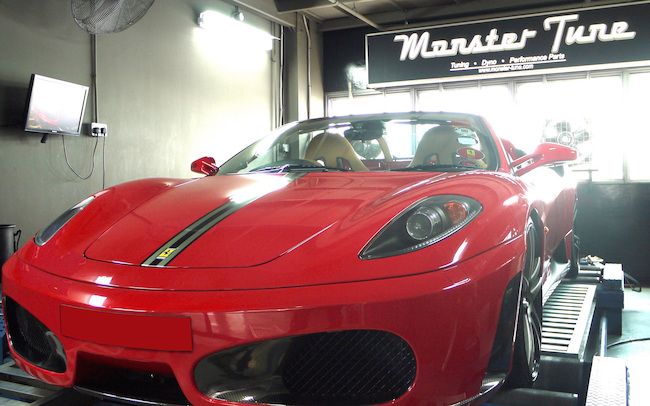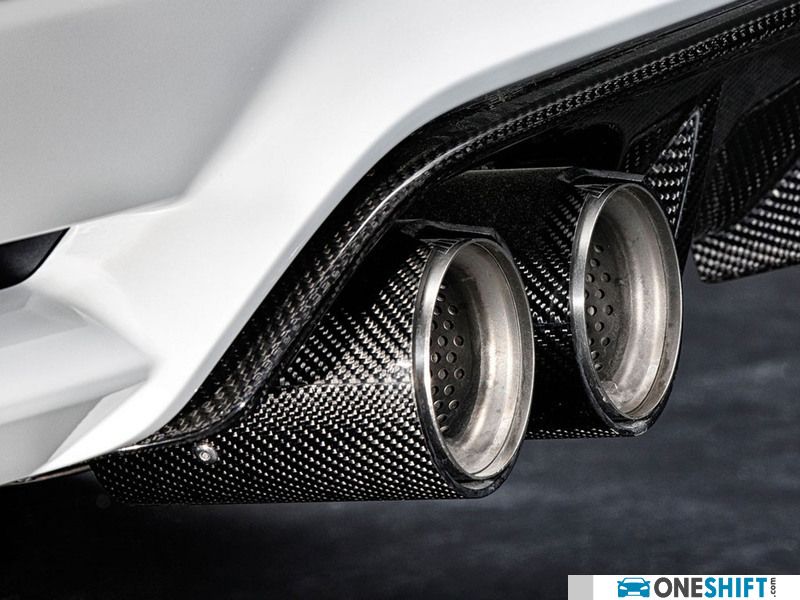5 ways to turn your ride (legally) into an F1 race car
Wanna feel like an F1 driver? Zhng your car with all these various performance options and you're sure to feel like Lewis Hamilton behind the wheel!


For the uninitiated, the ECU or engine control unit is the um, thing, which controls your car’s engine. These days cars run on computer power (and quite possibly petrol as well) and many systems on board a car are run by one computerised system or another. These include things like the transmission, vehicle stability control, anti-lock brakes and the aforementioned engine.
Quite often, manufacturers tune the engine’s parameters to certain criteria that they set based on factors including wear and tear longevity and safety. These parameters include things like air intake volume, temperature, fuel grade and so on. We know that the internal combustion engine works on the “suck, squeeze, bang, blow” principle; recalibrating the ECU to optimise the use of these elements to produce energy to drive the wheels will therefore provide more go for your car.
This is not to say that after an ECU tune your car’s engine will wear out faster; there are a number of reasons and conspiracy theories as to why car manufacturers “detune” a car, but there are also ways to safely uprate the performance of your engine. Certain makes have the same engine in the same car but in different levels of tune for different prices, which makes you wonder what they’re really up to.
At Monster Tune, U.K. trained experts will perform a custom tune for your ECU. They’ve also got the all-important dynamometer (dyno) to measure the pre and post tuning performance of your car, so you know you’re not getting just a feeling after the tune. Post tuning benefits include the obvious power and torque gains, as well as fuel savings from a more efficient engine. Other options you can choose from at Monster Tune include transmission tuning, for faster shift times which will in turn also speed up the car.
Stock suspension for many cars tend to be comfort oriented; after all you wouldn’t want your grandma to get dizzy and throw up in the back while you drive her around for Chinese New Year visitations. There are of course exceptions to this (see Italian exotica), but for most “normal” cars you’ll want to look into this as an option for a more race car like feel.
Let’s start with the basics. Your car sits on its wheels, which are mounted on some shock absorbing apparatus. This is of course to ensure that uneven surfaces on the road can be traversed over without causing major upsets to the car’s forward motion. It’ll also ensure that shocks aren’t transferred directly to the chassis or the steering controls, which prevents any nasty damage those bumps may cause. I’m simplifying greatly here, but for the sake of basic understanding, let’s go with this for now.
The suspension therefore plays quite an important role in your car’s dynamics, because it affects steering and ride feel. Often times when you throw your car around a corner with wild abandon, you may feel the car’s weight being shifted around due to the centrifugal force. To prevent this wobbly feeling (also known as body roll), you’ll need a suspension system that is a little stiffer so it doesn’t dip during cornering and also to provide you that firmed up sports car feeling many wannabe racers love.
Options for suspension tuning include coilover changes, or individual changes to the dampers and springs for a different ride feel from stock. Some suspension modifications also enable you to change the ride height, should you wish to get that hunkered down look; although that might mean speed humps are your worse enemy.
Many cars look a bit plain Jane when they come out of the factory – they don’t always get your blood racing. Of course the styling of a car has to appeal to the mass market and not everyone wants to drive a race car around so we can understand that not all car makers go for sporty looks.
If for any reason you think your car is a little bit boring to look at and want a more aggressive look or visuals that make people think your car is a more expensive model than it really is, body kits are a good upgrade. Many body shops sell different body kits for most cars, and you can take your pick of style from a wide range of different kits.
Areas that are usually blinged out are front and rear bumpers, side skirts as well as fenders and even hoods. Spoiler alert: you can always stick a big rear wing on the boot for that race car look that girls will apparently swoon at.
While some body kits are merely aesthetic in nature, others promise to deliver added performance. Some cars have aerodynamic kits that provide more down force and less air resistance, which play a part in making them quicker via wind cheating. An example from Europe that’s pretty well-known: the letter between L and N when stickered on a certain make of car will actually make it go faster.
The most common modification done to a car is at the wheels. It’ll have to match that body kit you just got right? Look no further than the nearest carpark and you’ll see all kinds of rims fitted on to cars that you just know are not from the factory. Many different designs are available, and for the most part it’s not a cause of concern for most people as far as warranty or the law goes.
You can change the size of the wheels; if you think your stock 16” wheels are too small and leave too much of a gap in the wheel arch, get a bigger one. Want something with a sportier look? Go for less spokes and more rim. Continental cars owners will also tell you that brake dust is a pain in the posterior, so they’ll often go for matte black rims to blend the brake dust right in.
You can’t change the rims without changing the tyres – duh right. Tyre options vary like fish at a wet market. You can get lots of different brands and model lines, with lots of different sizes to suit your car. Some tyres also promise to be street legal race tyres. Don’t try street racing on them though; that’s the illegal part.
Most importantly, make sure that the tyres fitted on those rims are the in accordance with the manufacturer’s specs. Not all tyres and rims are created equal, and you should know what the numbers on a tyre mean. 225/55R17 means 225mm width; 55 is the aspect ratio, meaning the ratio of the height to the width of the tyre; R is radial tyre and 17 is the rim diameter. So now you know. Be sure to check the driver side door frame or the owner’s manual for approved tyre sizes for your car.
And now for the part you’ve been waiting for. How can I forget the exhaust system? F1 was famously criticised not too long ago for the lousy noises those V6 turbos produce, and you certainly can’t have an inaudible or unpleasant sounding exhaust note if you want to zhng your car properly. After all, the first thing that alerts other drivers hogging the right lane is your roaring exhaust note coming up quickly behind them.
Be forewarned though; not all exhaust systems are LTA approved, so make sure you choose the ones that are.
Exhaust mods can be either cat-back or axle-back. Cat-back means everything from the catalytic converter onwards (the thing used to reduce CO, NOx and hydrocarbon emissions) is removed and replaced with something that allows the car to breathe better which in turn provides better performance (see ECU mod again if you don’t get why). Axle-back mods simply change the pipes from the rear axle onwards out to the rear bumper.
What’s the difference? Well less pipes to change means axle-back mods are cheaper. Cat-back changes tend to be more comprehensive and create more power as the car’s breathing apparatus becomes less restricted after all those pipe changes. However, some cars do come with pretty decent exhausts, so perhaps only an axle-back may be necessary depending on the car.
Exhaust pipe materials also affect the way it sounds. Titanium exhausts are notoriously famous for their distinctive sound, and is the choice material for some renowned brands. They will of course cost more than the typical stainless steel exhausts.
And if you’ve got no more money left after everything else and don’t want to wake the neighbours every morning, some aftermarket carbon fibre exhaust tips or some additional pipe tips on the other side of the rear bumper will add to the look. After all, if you don’t say it, who’s gonna know that they’re not real?

Credits: Story and Photos by Alvan Sio


Get the Best Price for your used car
from 500+ dealers in 24 hours

- Convenient and Hassle-Free
- Consumer Protection
Transparent Process
With No Obligation








